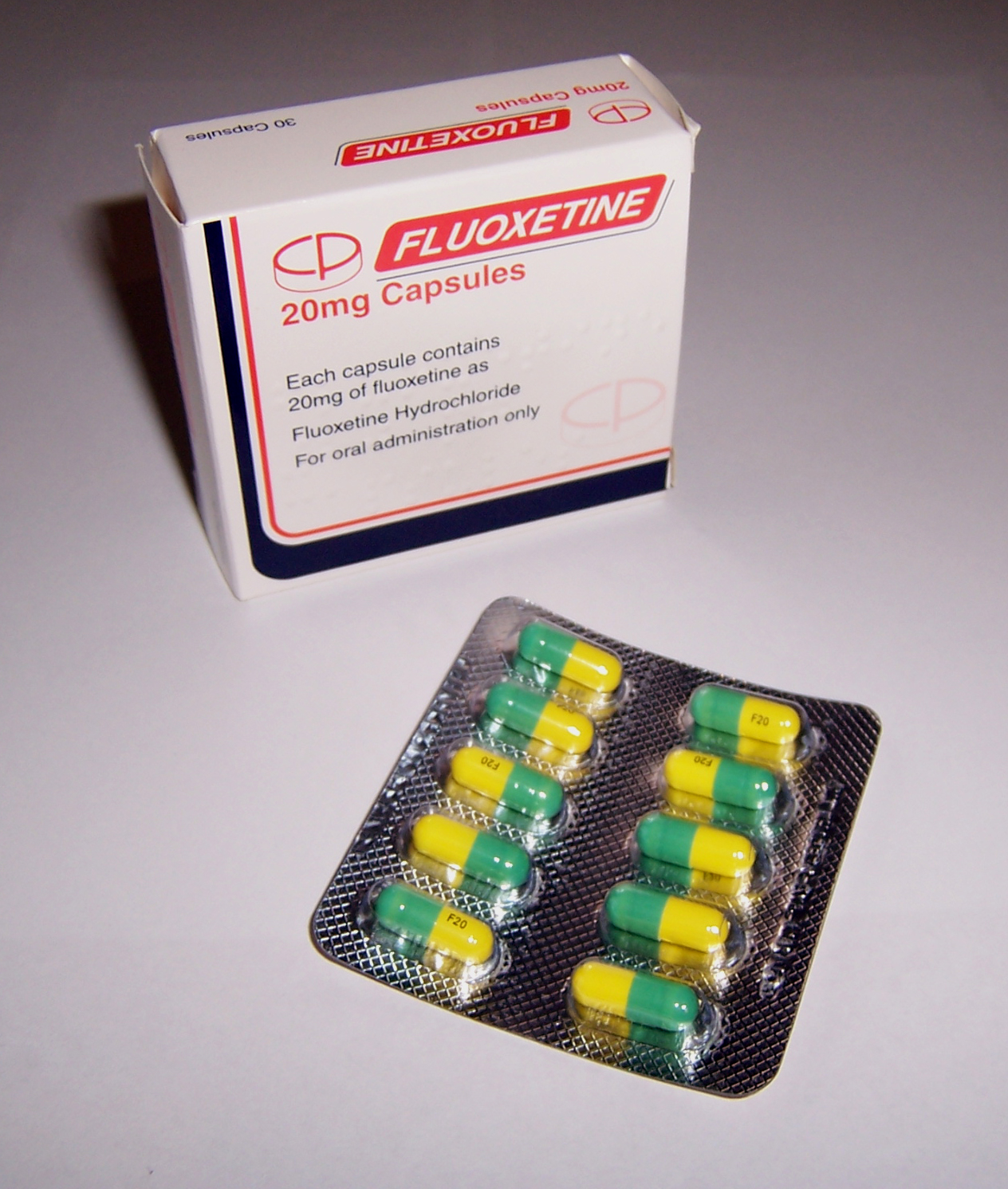|
Impulse Control Disorder
Impulse-control disorder (ICD) is a class of mental disorder, psychiatric disorders characterized by impulsivity – failure to resist a temptation, an urge, or an impulse; or having the inability to not speak on a thought. The fifth edition of the American Psychiatric Association's ''Diagnostic and Statistical Manual of Mental Disorders'' (DSM-5) that was published in 2013 includes a new chapter on disruptive, impulse-control, and conduct disorders covering disorders "characterized by problems in emotional and behavioral self-control". Five behavioral stages characterize impulsivity: an impulse, growing tension, pleasure on acting, relief from the urge, and finally guilt (which may or may not arise). Types Disorders characterized by impulsivity that were not categorized elsewhere in the DSM-IV-TR were also included in the category "Impulse-control disorders not elsewhere classified". Trichotillomania (hair-pulling) and skin-picking were moved in DSM-5 to the obsessive-compuls ... [...More Info...] [...Related Items...] OR: [Wikipedia] [Google] [Baidu] |
Mental Disorder
A mental disorder, also referred to as a mental illness, a mental health condition, or a psychiatric disability, is a behavioral or mental pattern that causes significant distress or impairment of personal functioning. A mental disorder is also characterized by a clinically significant disturbance in an individual's cognition, emotional regulation, or behavior, often in a society, social context. Such disturbances may occur as single episodes, may be persistent, or may be relapsing–remitting. There are many different types of mental disorders, with signs and symptoms that vary widely between specific disorders. A mental disorder is one aspect of mental health. The causes of mental disorders are often unclear. Theories incorporate findings from a range of fields. Disorders may be associated with particular regions or functions of the brain. Disorders are usually Medical diagnosis, diagnosed or assessed by a mental health professional, such as a Clinical psychology#Profes ... [...More Info...] [...Related Items...] OR: [Wikipedia] [Google] [Baidu] |
European Neuropsychopharmacology
''European Neuropsychopharmacology'' is a monthly peer-reviewed scientific journal published by Elsevier. It is the official journal of the European College of Neuropsychopharmacology. It was established in November 1990 and covers clinical and basic research relevant to the effects of centrally acting agents in its broadest sense. According to the ''Journal Citation Reports'', the journal has a 2020 impact factor The impact factor (IF) or journal impact factor (JIF) of an academic journal is a type of journal ranking. Journals with higher impact factor values are considered more prestigious or important within their field. The Impact Factor of a journa ... of 4.600, ranking it 26th out of 192 journals in the category "Clinical Neurology", 24th out of 140 journals in the category "Psychiatry", and 31st out of 254 journals in the category "Pharmacology and Pharmacy". See also * List of psychiatry journals References External links * European College of Neuropsychopha ... [...More Info...] [...Related Items...] OR: [Wikipedia] [Google] [Baidu] |
Child Pyromaniac
A child pyromaniac is a child with an impulse-control disorder that is primarily distinguished by a compulsion to set fires in order to relieve built-up tension. Child pyromania is the rarest form of fire-setting. Most young children are not diagnosed with pyromania, but rather with conduct disorders. A key feature of pyromania is repeated association with fire without a real motive. Pyromania is not a commonly diagnosed disorder, and only occurs in about one percent of the population. It can occur in children as young as three years old. About ninety percent of the people officially diagnosed with pyromania are male. Pyromaniacs and people with other mental illnesses are responsible for about 14% of fires. Symptoms Many clinical studies have found that fire-setting rarely occurs by itself, but usually occurs in addition to other socially unacceptable behavior. The motives that have earned the most attention are pleasure, a cry for help, retaliation against adults, and a desir ... [...More Info...] [...Related Items...] OR: [Wikipedia] [Google] [Baidu] |
Cognitive Behavioral Therapy
Cognitive behavioral therapy (CBT) is a form of psychotherapy that aims to reduce symptoms of various mental health conditions, primarily depression, PTSD, and anxiety disorders. Cognitive behavioral therapy focuses on challenging and changing cognitive distortions (thoughts, beliefs, and attitudes) and their associated behaviors in order to improve emotional regulation and help the individual develop coping strategies to address problems. Though originally designed as an approach to treat depression, CBT is often prescribed for the evidence-informed treatment of many mental health and other conditions, including anxiety, substance use disorders, marital problems, ADHD, and eating disorders. CBT includes a number of cognitive or behavioral psychotherapies that treat defined psychopathologies using evidence-based techniques and strategies. CBT is a common form of talk therapy based on the combination of the basic principles from behavioral and cognitive psychology. I ... [...More Info...] [...Related Items...] OR: [Wikipedia] [Google] [Baidu] |
Escitalopram
Escitalopram ( ), sold under the brand names Lexapro and Cipralex, among others, is an antidepressant medication of the selective serotonin reuptake inhibitor (SSRI) class. It is mainly used to treat major depressive disorder, generalized anxiety disorder, panic disorder, obsessive–compulsive disorder (OCD), and social anxiety disorder. Escitalopram is taken by mouth. For commercial use, it is formulated as an oxalate salt exclusively. Common side effects include headache, nausea, sexual problems, mild sedation, and trouble sleeping. More serious side effects may include suicidal thoughts in people up to the age of 24 years. It is unclear if use during pregnancy or breastfeeding is safe. Escitalopram is the (''S'')-enantiomer of citalopram (which exists as a racemate), hence the name es-citalopram. Escitalopram was approved for medical use in the United States in 2002. Escitalopram is rarely replaced by twice the dose of citalopram; escitalopram is saf ... [...More Info...] [...Related Items...] OR: [Wikipedia] [Google] [Baidu] |
Paroxetine
Paroxetine ( ), sold under the brand name Paxil among others, is an Antidepressant, antidepressant medication of the selective serotonin reuptake inhibitor (SSRI) class used to treat major depressive disorder, obsessive-compulsive disorder, obsessive–compulsive disorder (OCD), panic disorder, social anxiety disorder, post-traumatic stress disorder (PTSD), generalized anxiety disorder, and premenstrual dysphoric disorder. It has also been used in the treatment of premature ejaculation, and hot flashes due to menopause. It is taken oral administration, orally (by mouth). Common side effects include drowsiness, dry mouth, loss of appetite, sweating, insomnia, trouble sleeping, and sexual dysfunction. Serious side effects may include suicidal thoughts in those under the age of 25, serotonin syndrome, and mania. While the rate of side effects appears similar compared to other SSRIs and SNRIs, antidepressant discontinuation syndrome may occur more often. Use in pregnancy is not r ... [...More Info...] [...Related Items...] OR: [Wikipedia] [Google] [Baidu] |
Fluoxetine
Fluoxetine, sold under the brand name Prozac, among others, is an Antidepressant, antidepressant medication of the selective serotonin reuptake inhibitor (SSRI) class used for the treatment of major depressive disorder, Anxiety disorder, anxiety, obsessive–compulsive disorder (OCD), panic disorder, premenstrual dysphoric disorder, and bulimia nervosa. It is also approved for treatment of major depressive disorder in adolescents and children 8 years of age and over. It has also been used to treat premature ejaculation. Fluoxetine is oral administration, taken by mouth. Common side effects include anorexia (symptom), loss of appetite, nausea, diarrhea, headache, insomnia, trouble sleeping, xerostomia, dry mouth, and sexual dysfunction. Serious side effects include serotonin syndrome, mania, seizures, an increased risk of suicide, suicidal behavior in people under 25 years old, and an increased risk of bleeding. Antidepressant discontinuation syndrome is less likely to occur ... [...More Info...] [...Related Items...] OR: [Wikipedia] [Google] [Baidu] |
Clomipramine
Clomipramine, sold under the brand name Anafranil among others, is a tricyclic antidepressant (TCA). It is used in the treatment of various conditions, most notably obsessive–compulsive disorder but also many other disorders, including hyperacusis, panic disorder, major depressive disorder, trichotillomania, body dysmorphic disorder and chronic pain. It has also been notably used to treat premature ejaculation and the cataplexy associated with narcolepsy. It may also address certain fundamental features surrounding narcolepsy besides cataplexy (especially hypnagogic and hypnopompic hallucinations). The evidence behind this, however, is less robust. As with other antidepressants (notably including selective serotonin reuptake inhibitors), it may paradoxically increase the risk of suicide in those under the age of 25, at least in the first few weeks of treatment. It is typically taken by mouth, although intravenous preparations are sometimes used. Common side effects includ ... [...More Info...] [...Related Items...] OR: [Wikipedia] [Google] [Baidu] |
Fluvoxamine
Fluvoxamine, sold under the brand name Luvox among others, is an antidepressant of the selective serotonin reuptake inhibitor (SSRI) class. It is primarily used to treat major depressive disorder and, perhaps more-especially, obsessive–compulsive disorder (OCD), but is also used to treat anxiety disorders such as panic disorder, social anxiety disorder, and post-traumatic stress disorder. Fluvoxamine's side-effect profile is similar to that of other SSRIs. Common adverse effects include constipation, gastrointestinal problems, headache, anxiety, irritation, sexual problems, dry mouth, sleep problems and an increased risk of suicide at the start of treatment. These effects appear to be significantly weaker than with other SSRIs, with the exception of gastrointestinal side-effects. Fluvoxamine appears to be more tolerable than other SSRIs, particularly with respect to cardiovascular complications. Compared to escitalopram and sertraline, fluvoxamine's gastrointestinal pro ... [...More Info...] [...Related Items...] OR: [Wikipedia] [Google] [Baidu] |
Comorbid
In medicine, comorbidity refers to the simultaneous presence of two or more medical conditions in a patient; often co-occurring (that is, concomitant or concurrent) with a primary condition. It originates from the Latin term (meaning "sickness") prefixed with ("together") and suffixed with ''-ity'' (to indicate a state or condition). Comorbidity includes all additional ailments a patient may experience alongside their primary diagnosis, which can be either physiological or psychological in nature. In the context of mental health, comorbidity frequently refers to the concurrent existence of mental disorders, for example, the co-occurrence of depressive and anxiety disorders. The concept of multimorbidity is related to comorbidity but is different in its definition and approach, focusing on the presence of multiple diseases or conditions in a patient without the need to specify one as primary. Definition The term "comorbid" has three definitions: # to indicate a medical con ... [...More Info...] [...Related Items...] OR: [Wikipedia] [Google] [Baidu] |
Obsessive–compulsive Disorder
Obsessive–compulsive disorder (OCD) is a mental disorder in which an individual has intrusive thoughts (an ''obsession'') and feels the need to perform certain routines (''Compulsive behavior, compulsions'') repeatedly to relieve the distress caused by the obsession, to the extent where it impairs general function. Obsessions are persistent unwanted thoughts, mental images, or urges that generate feelings of anxiety, disgust, or discomfort. Some common obsessions include fear of contamination, obsession with symmetry, the fear of acting Blasphemy, blasphemously, sexual obsessions, and the fear of possibly harming others or themselves. Compulsions are repeated actions or routines that occur in response to obsessions to achieve a relief from anxiety. Common compulsions include excessive hand washing, cleaning, counting, ordering, repeating, avoiding triggers, hoarding, neutralizing, seeking assurance, praying, and checking things. OCD can also manifest exclusively through m ... [...More Info...] [...Related Items...] OR: [Wikipedia] [Google] [Baidu] |
Striatum
The striatum (: striata) or corpus striatum is a cluster of interconnected nuclei that make up the largest structure of the subcortical basal ganglia. The striatum is a critical component of the motor and reward systems; receives glutamatergic and dopaminergic inputs from different sources; and serves as the primary input to the rest of the basal ganglia. Functionally, the striatum coordinates multiple aspects of cognition, including both motor and action planning, decision-making, motivation, reinforcement, and reward perception. The striatum is made up of the caudate nucleus and the lentiform nucleus. However, some authors believe it is made up of caudate nucleus, putamen, and ventral striatum. The lentiform nucleus is made up of the larger putamen, and the smaller globus pallidus. Strictly speaking the globus pallidus is part of the striatum. It is common practice, however, to implicitly exclude the globus pallidus when referring to striatal structures. In pr ... [...More Info...] [...Related Items...] OR: [Wikipedia] [Google] [Baidu] |





